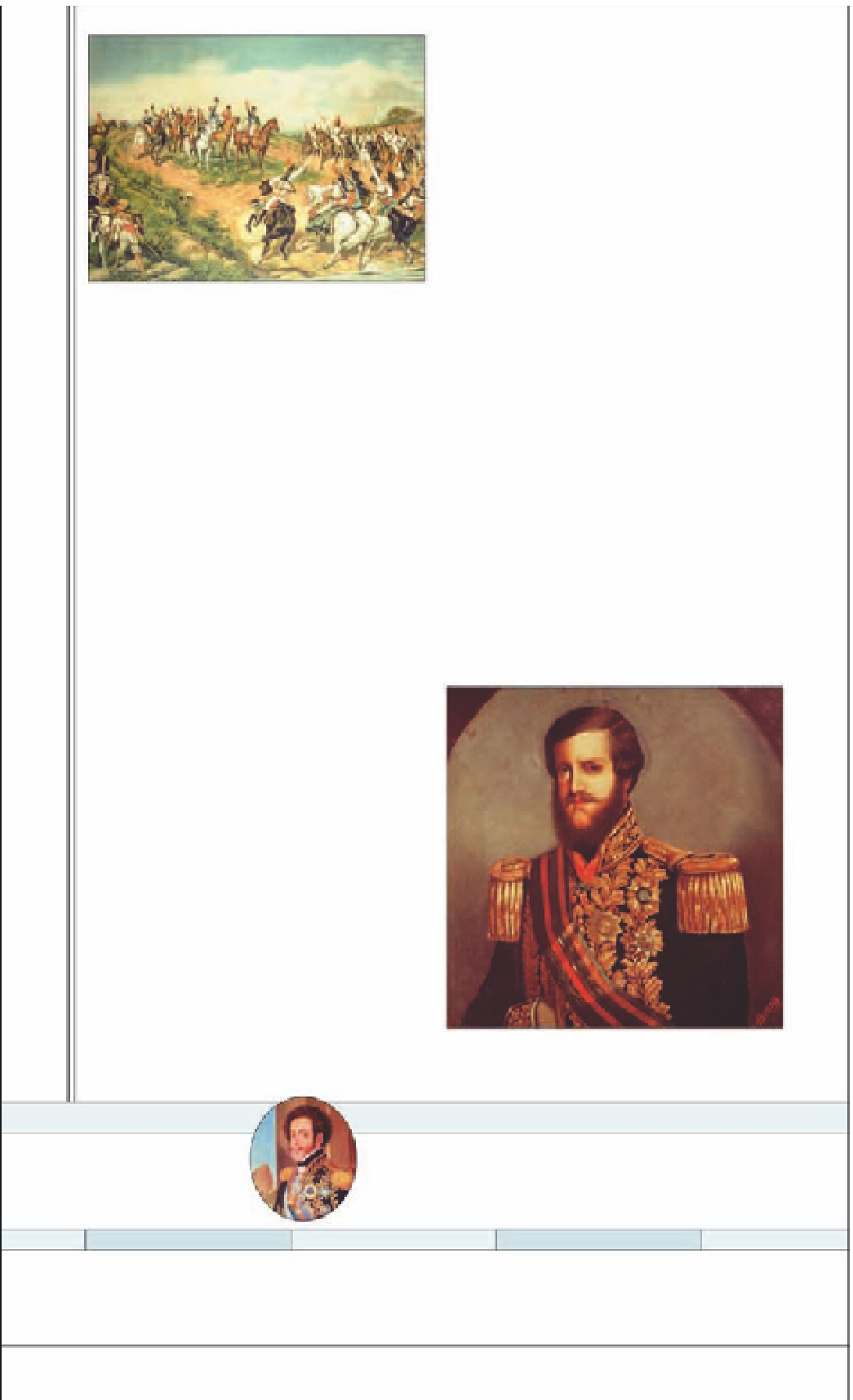Travel Reference
In-Depth Information
PROVINCIAL UNREST
Dom Pedro I was forced to abdicate
in favor of his five-year-old son, Dom
Pedro II. From 1831 to 1840, three
appointed regents ruled the country
in the young emperor's name during
a period of turmoil, in which local
factions struggled to gain control of
their provinces and to keep the
masses in line. The regency in Rio de
Janeiro gave considerable power to
the provinces in 1834, when Brazil
became a federation of locally auto-
nomous regional powers, with loose
allegiance to the center. The rebel-
lions, riots, and popular movements
that marked these years did not
spring from economic misery, but
from attempts to share in the pros-
perity stemming from the North
Atlantic demand for Brazil's exports.
Dom Pedro proclaiming “Independéncia ou Morte!”
at the Rio Ipiranga, on September 7, 1822
THE FIRST EMPEROR OF BRAZIL
The advance of French Emperor
Napoleon, in 1808, forced King Dom
João VI, who was ruling from Lisbon,
to relocate his government to Brazil.
In 1821, the royal family were forced
to return to deal with rebels back
home. Dom João's son, the Prince
Regent, who had stayed back in
Brazil, proclaimed independence
from Portugal on September 7, 1822.
In a famous scene at the Rio Ipiranga,
he tore the Portuguese insignia from
his uniform, drew his sword, and
declared, “Independéncia ou Morte!”
(Independence or Death). Three
months later, he crowned himself
Emperor Dom Pedro I.
Although the assumption of
independence had been easy,
Dom Pedro soon realized that
organizing the new government was
riddled with challenges. His own
autocratic nature proved to be the
biggest hurdle in winning the
confidence of his subjects. The new
consitution he proposed, based on
his own unlimited power, was
strongly opposed by the assembly.
When Dom Pedro dismissed his
assembly in 1831, demonstrators
demanded its reinstatement.
THE COFFEE INDUSTRY
Coffee, which was introduced to
Brazil in the early 1800s, filled the
void left by the collapse of the sugar
industry and the waning gold rush.
An army officer, Francisco de Mello,
A formal portrait of Brazil's Emperor Dom Pedro II
(1825-91), depicting him in full regalia
TIMELINE
Dom Pedro I
1842
Rebellions
in Minas
Gerais and
São Paulo
1808
Napoleon's
advance forces Dom
João to flee Portugal,
and relocate to Brazil
1831
Pedro dismisses
the Constituent
Assembly after a
draft constitution
is proposed
1837-38
The
Sabinada
Rebellion in
Salvador
1810
1820
1830
1840
1822
The Prince Regent
proclaims independence
from Portugal, crowning
himself Emperor Dom
Pedro I
1825
Britain and
Portugal sign a treaty
recognizing Brazilian
independence
1834
Brazil
becomes a
federation of
autonomous
regional powers
1838-41
The
Balaiada
Rebellion in
Maranhão









































